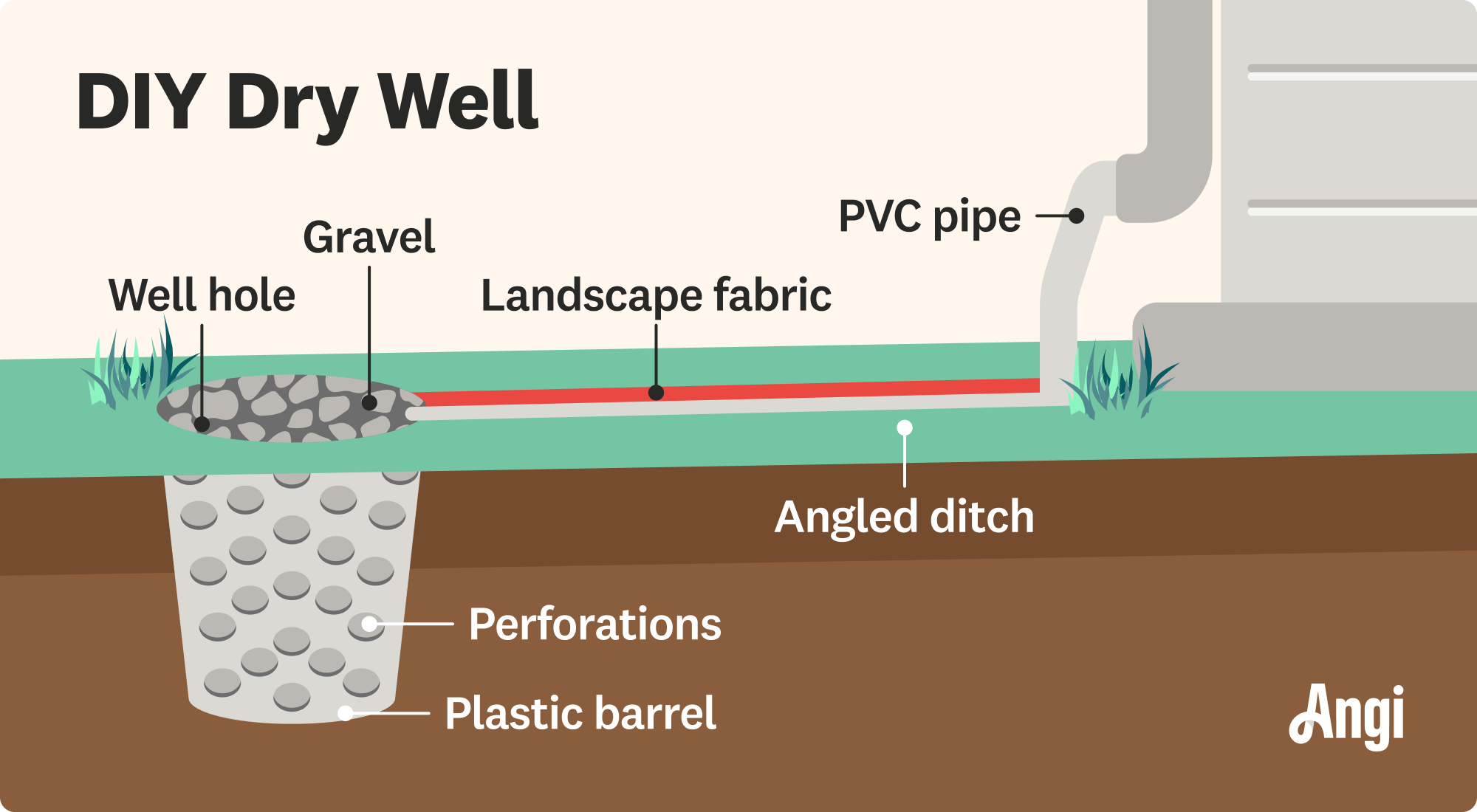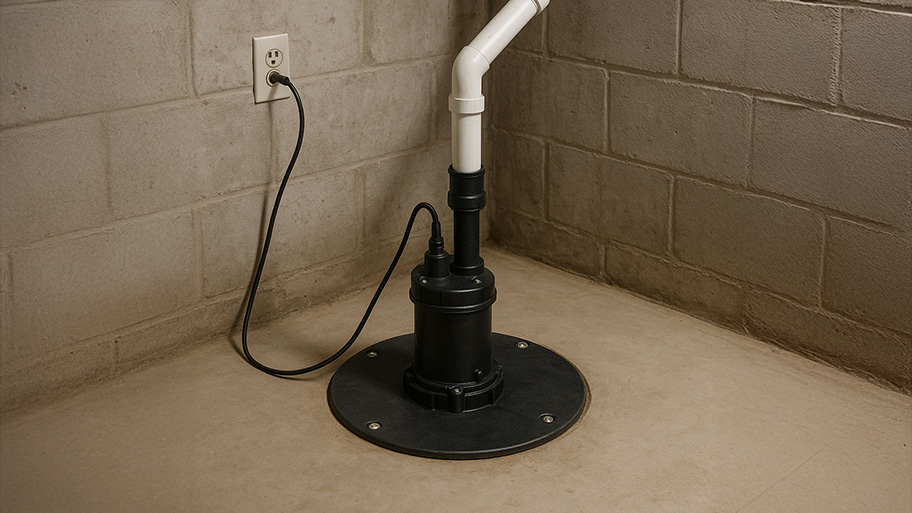
Drilling a well is no small feat. You’ll need to plan for excavating, a pump, and more. This guide will help you estimate and manage your well drilling costs.
This oxymoron comes to the rescue in areas with heavy rainfall


Instead of providing water, dry wells help disperse water underground after heavy rainfall and stop flooding in your yard.
Dry wells can last as long as 30 years when maintained properly.
If you live in an area with heavy rainfall, installing a dry well is a worthwhile investment.
Not all wells are made for providing water. On the contrary, dry wells help homeowners get rid of water they don’t want—namely stormwater runoff. Dry wells are also sometimes called seepage pits, and they can help you avoid flooding (and other landscaping fiascos) after heavy rain. Find all the details you need about dry wells, including how to maintain them and when it’s time to install one for yourself.
Dry wells are the opposite of traditional wells: Instead of providing water, they help drain it away. The water that goes into a dry well seeps into the ground and merges with the groundwater. This prevents oversaturation and flooding from stormwater drainage above ground.
Dry wells are drilled 30 to 70 feet deep and lined with gravel or fabric (or both). Some have additional storage capacity with pretreatment stages, which catch a large amount of water in a short time, treat it, and let it slowly seep into the groundwater over a longer period. These days, many dry wells also include pretreatment options to help remove oils, pollutants, and particles from the water, which might clog the well or contaminate the aquifer below.

Depending on whether you DIY, opt for professional installation, or install a dry well system with pretreatment stages, your system may have different parts. Here are some of the most common parts of a dry well to know about:
Barrel: DIY dry wells often include a plastic barrel filled with gravel. This is the primary part of a DIY dry well. It’s perforated to allow excess water to slowly escape.
Gravel: Gravel often fills the barrel (in a DIY dry well) or well hole (in a professional installation) and helps filter out solids and slow the water’s drainage into the soil.
Pipe: In DIY installations, you can connect a pipe between your dry well barrel and your gutter downspout to give the water an easy path to follow into the well.
Ditch: You need to have a ditch for your pipe to run through. The ditch is angled to allow water to freely flow down from the gutter to the dry well or barrel.
Landscape fabric: Landscape fabric often lines the ditch or well hole and stops dirt or debris from clogging up the hole or ditch.
Sedimentation well: A sedimentation well is a type of pretreatment area for a dry well. Water can sit here before moving into the dry well itself while excess sediment is filtered out.
Dry wells are a common choice for homeowners who live in areas that receive large amounts of rain. Dry wells can redirect that stormwater runoff away from delicate landscaping to reduce the amount of damage it might cause.
Depending on where you live, dry wells may already be installed in your neighborhood or subdivision. But if you’re still dealing with large amounts of stormwater runoff, you can install a dry well on your own property. Your local government may require you to get a permit to dig a dry well, so always look up the laws where you live and call a local well pro before moving forward with this type of project.
Dry well installation costs $3,100 on average when done by a pro, though specifics depend on well size and the cost of labor in your area.

One of the reasons dry wells are so appealing to homeowners in rainy areas is because, if they’re installed professionally, they require very little maintenance thereafter. Simply inspecting your dry well after a storm to ensure it’s draining properly is the most common maintenance step you’ll need to take.
You should remove any excess debris and check to ensure the well cap is fastened securely once per month. Components inside the well, like gravel or fabric, may need to be replaced every few years or whenever the well starts draining noticeably slowly. Your homeowners’ association dues, if you have any, may help you pay for required dry well maintenance.
From average costs to expert advice, get all the answers you need to get your job done.

Drilling a well is no small feat. You’ll need to plan for excavating, a pump, and more. This guide will help you estimate and manage your well drilling costs.

The cost of a well casing replacement depends on materials, well depth, and labor. This guide will help you find the right casing for your well and budget.

Cisterns can save you money and help the environment. So what’s the cost of a cistern and how does it compare to other rainwater collection systems?

The right pressure tank size is important for maintaining your well pressure system’s efficiency. Learn how to size a well pressure tank with these steps.

Sump pump discharge lines come in a couple of diameters and a range of lengths. Here’s how to determine the right sump pump pipe size for your installation.

Does a sump pump need a dedicated circuit? Find out the wiring and electrical requirements for installing a sump pump in your home.